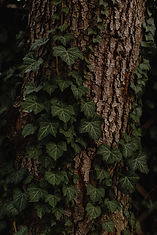

Free the Trees
from English Ivy
Rose Valley Free the Trees Weekend 2025
March 29, 2025
April 5-6, 2025
Join fellow residents for Rose Valley’s third annual FREE THE TREES EVENT and help free our trees of invasive English ivy. Volunteer ivy cutters should wear gardening gloves and long pants and sleeves to protect you from ticks and poison ivy. Bring pruning shears, loppers, and a pruning saw if you have them.
Free the Trees began as part of the RV Next 100 initiative to promote sustainable
goals and practices during Rose Valley’s centennial in 2023. Since then more
than 75 residents have learned how to manage English ivy and have joined their
neighbors to remove these invasive vines from over 250 trees – on Borough
property, at the RV Museum, at the Pool, and in our neighborhoods.
This year volunteer ivy-cutters will be working in neighborhoods across the Borough.
-
Saturday March 29, 10:00 AM – noon. Traymore residents and SRV families to meet in the School parking area at 10:00 AM.
-
Saturday April 5, 9:30 AM – noon. Longpoint residents to meet at 31 Longpoint Lane. Rain-date Sunday April 6.
-
Saturday April 5, 10:00 AM – noon. Pool members and all other volunteers to meet in the RV Pool parking lot at 10:00 AM. Rain-date Sunday April 6.
-
Saturday April 5 and Sunday April 6, 1:00 – 4:00 PM. RV Museum members to meet near the entrance to the Museum.
English ivy (Hedera helix) is “an aggressive invader that threatens all vegetation levels of forested and open areas” according to the National Park Service. It is a serious threat to forests and backyard trees in Rose Valley, across Pennsylvania, and throughout temperate North America. (Adapted from www.theardens.com/weedEnglishIvy.htm)

Why remove English Ivy?
-
Its dense growth smothers native plants, preventing sunlight from reaching leaves.
-
Ivy running up trees can cover branches, preventing leaf-out in the trees, eventually killing them.
-
The weight of mature English ivy vines can make infested trees susceptible to blow-over during storms.
-
English ivy can transmit bacterial leaf scorch, which threatens native elms, oaks, and maples.
-
English ivy aggressively creeps beyond its intended space into neighboring yards, parks, and forests.
- Mature vines climbing trees, walls or fences produce seeds, which birds disperse to other areas.
-
Ivy-covered slopes are susceptible to erosion. English ivy has shallow roots, and it prevents the growth of native plants with deeper roots that are more effective bank stabilizers.


How to clear ivy from a tree.
-
Cut the stems of English ivy all the way around the tree trunk. Clear a section around the trunk at least a foot wide. Ivy dangling on the tree above the cut will eventually dry up and fall down. Cut with pruners or loppers. Large vines may require a saw, but be careful not to damage the tree’s bark.
-
Pull English ivy from a 3 to 6-foot circle around the base of the tree, pulling out as many roots as you can. Freeing this area of ivy will stop it from climbing back up the trunk.
-
Best to dispose of English ivy in a compost pile or in the trash. It resprouts easily!
-
USEFUL TOOLS: pruners, loppers, a portable saw for thick vines, a forked tool to pull multiple vines from the ground, elbow grease and gloved hands! (Afterwards, wash gloves in hot water just in case some of the vines were poison ivy.)
Some ways to prevent ivy waste from resprouting.
-
Deposit in a hot active compost pile
-
Chip or chop
-
Dry out in the sun on a driveway, porch or other non-soil surface.
-
Close up in a trash bag
-
DO NOT JUST TOSS ENGLISH IVY ONTO THE GROUND. The cut vines will continue to grow and spread.
-
Use of chemical herbicides: To kill vines that are too large to uproot, paint the cut stumps of ivy with glyphosate or triclopyr. This may kill vines’ roots, but only if applied in warm weather (50s or higher) immediately after cutting. BE CAREFUL NOT TO GET ANY OF THE HERBICIDE ON THE TREE TRUNK OR ON NEARBY NATIVE PLANTS.
Replant with native groundcover
-
Perennial ground cover options include mayapple, foamflower, creeping phlox, wild blue phlox, white wood aster, bigleaf aster, blue wood aster, smooth aster, New York aster,
-
Evergreen and semi-evergreens options include moss phlox, partridgeberry, checkerberry wintergreen (teaberry), bearberry, Allegheny spurge (native pachysandra), Aaron’s-beard, golden ragwort, Appalachian barren strawberry, green-and-gold, Christmas fern, marginal woodfern, blue wood sedge, Pennsylvania sedge, bristleleaf sedge, seersucker sedge, silver sedge, creeping sedge ‘Bunny Blue’, wild ginger.
-
Virginia-creeper, a deciduous woody vine, is a good native groundcover for natural areas but it is also a climber and can be too vigorous for some gardens.
-
If you pull ivy from wooded areas where it is just creeping in, native plants and seeds already in the woods should grow to fill in the cleared spaces (but watch out for other invasive plants).
Organized by the Rose Valley Environmental Advisory Council (www.rosevalleyborough.org/eac).